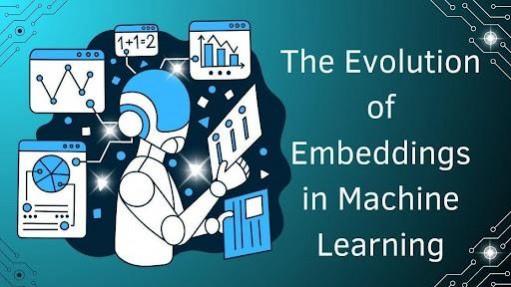The Evolution of Embeddings in Machine Learning
3 min read
In todays fast growing digital era, Sudeep Meduri explores the progression of embeddings in AI, from foundational innovations to transformative applications. His insights emphasize embeddings’ growing potential and their critical role in advancing AI capabilities.
Tracing the Beginnings: From LSA to Word2Vec
Early Concepts in Data Representation
Embeddings were created to address a key machine learning challenge: converting discrete data into continuous vectors for better processing. Early methods like Latent Semantic Analysis (LSA) formed a “semantic space” for words but struggled with linear assumptions and polysemy.
The Word2Vec Revolution
Introduced in 2013, Word2Vec revolutionized language processing with CBOW and Skip-Gram architectures, capturing semantic and syntactic relationships and enabling analogical reasoning, like “king – man + woman = queen,” advancing embedding techniques.
Advancements in Natural Language Processing Embeddings
GloVe: Blending Local and Global Context
Building on Word2Vec, GloVe combined local context with global corpus statistics, creating richer embeddings that enhance NLP tasks by balancing local and global relationships, improving word similarity and analogy performance.
FastText and Morphological Adaptability
FastText, designed to handle out-of-vocabulary words, introduced subword information, producing robust embeddings for complex languages. Using character n-grams, FastText generated embeddings for unseen words, benefiting specialized vocabularies.
Expanding Beyond Text: Embeddings in Other Domains
Image Embeddings and Convolutional Neural Networks
In computer vision, Convolutional Neural Networks (CNNs) transform images into dense vectors, capturing complex features via convolutional and pooling layers. These embeddings are essential for image classification, object detection, and retrieval.
Graph Embeddings with Node2vec and Graph Neural Networks
Generating embeddings for graph-structured data, like social networks, poses unique challenges. Node2vec learns node representations, while Graph Neural Networks (GNNs) incorporate graph structures, enabling tasks like link prediction and recommendations.
Audio Processing: Embeddings in Speech and Music
In audio processing, embeddings enhance speaker verification and music recommendation. Models like i-vectors capture speaker traits, while music embeddings support pattern recognition, genre classification, and track recommendations, demonstrating versatility across data types.
Cross-Modal Embeddings: Bridging Different Modalities
Integrating Text, Image, and Audio
Cross-modal embeddings unify diverse data types, enhancing AI’s abilities. Models like CLIP use joint spaces to link images and text, enabling tasks like image captioning and visual question answering without specialized training.
The Transformer Revolution in Contextual Embeddings
BERT and Contextualized Word Representations
The 2017 introduction of transformer architecture, followed by BERT, transformed embeddings. BERT’s contextual embeddings adapt to surrounding words, enhancing tasks like named entity recognition and sentiment analysis, capturing context-sensitive meanings for improved language processing.
Addressing Challenges in Embedding Technology
Bias Mitigation in AI Systems
Embeddings frequently inherit biases from training data, affecting sensitive applications. Researchers address this with debiasing techniques, diverse datasets, and fairness-focused training protocols to ensure AI systems remain fair and socially responsible.
Balancing Dimensionality and Efficiency
Higher-dimensional embeddings capture complex relationships but demand more computational resources. Dimensionality reduction techniques optimize storage and processing needs without compromising performance, making embeddings more practical and effective across domains.
Future Directions: Cross-Modal and Fairness-Focused Embeddings
Unified Representations Across Modalities
Embedding advances focus on unified cross-modal representations, enabling AI to process diverse data types fluidly. This supports tasks like visual question answering and multi-modal search, integrating multiple sensory inputs seamlessly.
Enhancing Fairness and Reducing Bias
Reducing bias in embeddings is a critical research focus. Fairness-aware learning and diverse datasets promote inclusivity, fostering ethical, responsible AI applications.
Embeddings in Emerging AI Applications
As AI progresses, embeddings will advance quantum machine learning, federated learning, and neuro-symbolic AI. In federated learning, they enable privacy-preserving, decentralized data, highlighting their flexibility for AI innovations.
In conclusion, Sudeep Meduri emphasizes embeddings’ transformative role in machine learning and AI. From early NLP applications to multi-modal advancements, embeddings shape AI’s future, remaining essential for building advanced, ethical systems as bias challenges are addressed.

